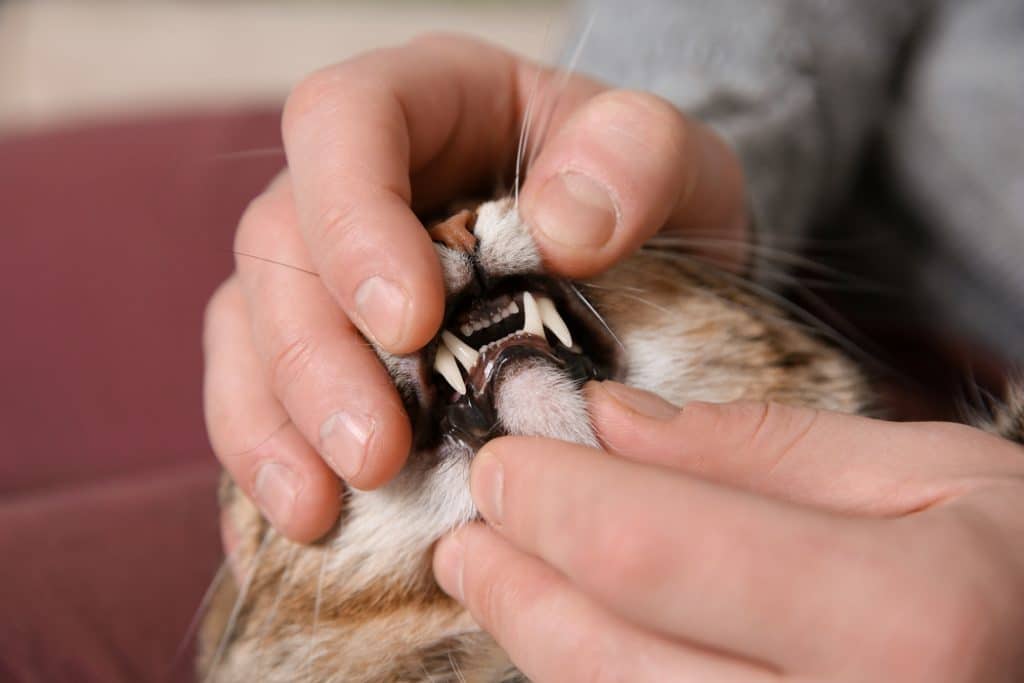
Sometimes when you decide to bring a feline into your life, telling its age can be a bit tricky, unless, of course, you know the date when the furbaby was born. But as most of us decide to adopt and rescue, we will always have an uncertain date of birth for our kitties. Looks like examining a cat’s teeth can give you a close answer to how old your cat might be, a method even vets use.
Do you want to find out how? Keep reading!
How to determine a cat’s age by its teeth?
To determine a cat’s age by its teeth, whilst the cat is comfortable or sleeping you need to count its teeth and try to identify their type to approximately learn how old the cat might be. A kitten is born toothless and between five to six months old it’s growing two sets of teeth. First, are the baby teeth also called deciduous, primary, or milk teeth, 26 in number. The first teeth that a kitten gets are the incisors located at the front of their mouth, 6 on the upper jaw (the maxilla), and 6 on the lower jaw (the mandible) that are used for grasping and start to grow between 2 and 4 weeks of age. Next, come the canine teeth (fangs), 4 long sharp teeth used for tearing stuff up, which grow around the third and fourth week of your kitten’s life. The premolars, located 6 on the upper jaw and 4 on the lower one, grow around 4 to 6 weeks old and aid the kitten in grinding up its food and the kitten will have then completed growing all its deciduous teeth. Finally between the age of 5 to 6 months old, the last 4 teeth, the molars start to emerge, also used for grinding food, completing the 30 adult permanent teeth.
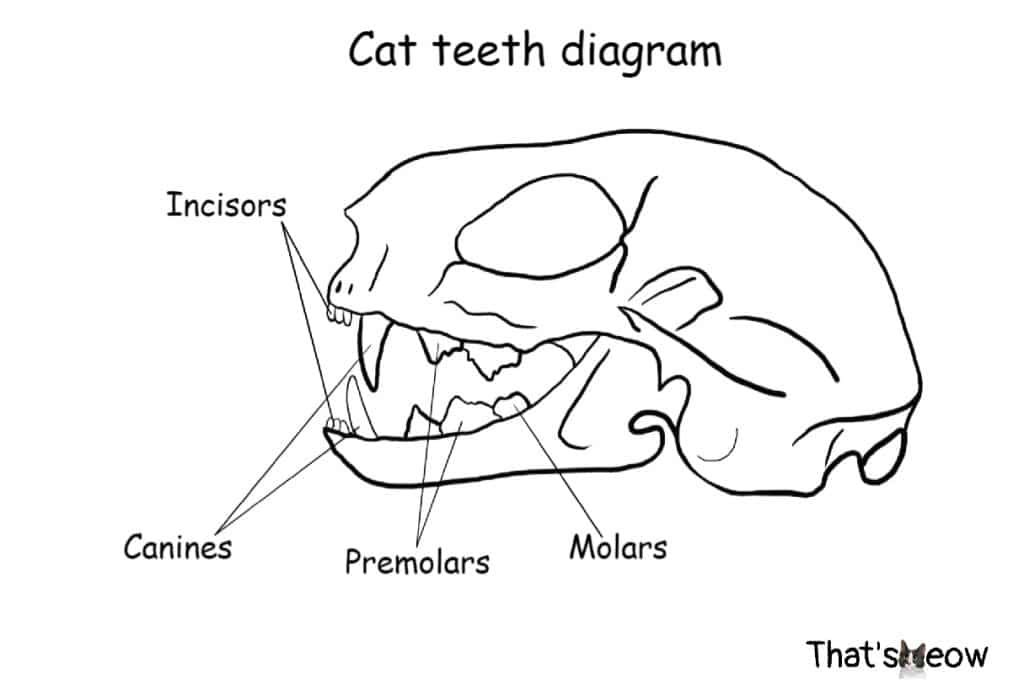
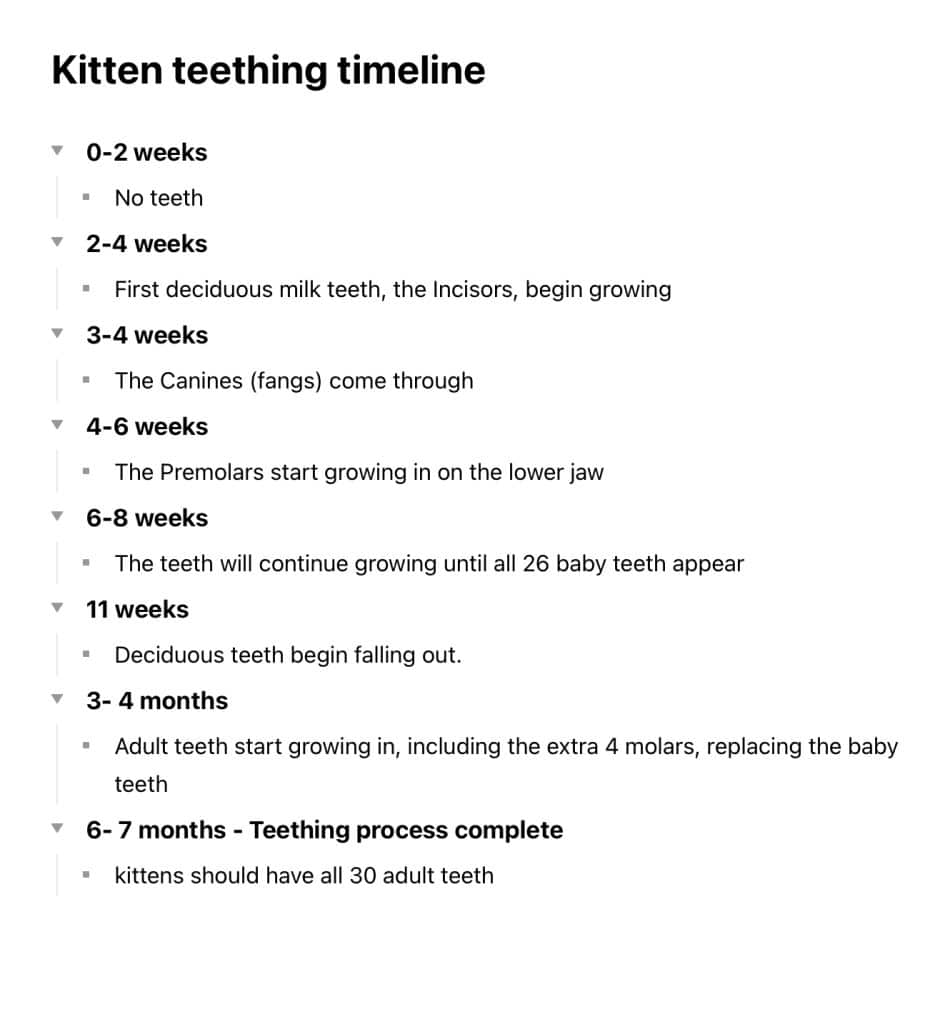
After 6 months of age, when your cat has completed growing its 30 adult teeth, the growth of the teeth it’s no longer useful, and it’s harder to tell the age of a cat. In this case, look for the color of your cats’ teeth and how worn they are.
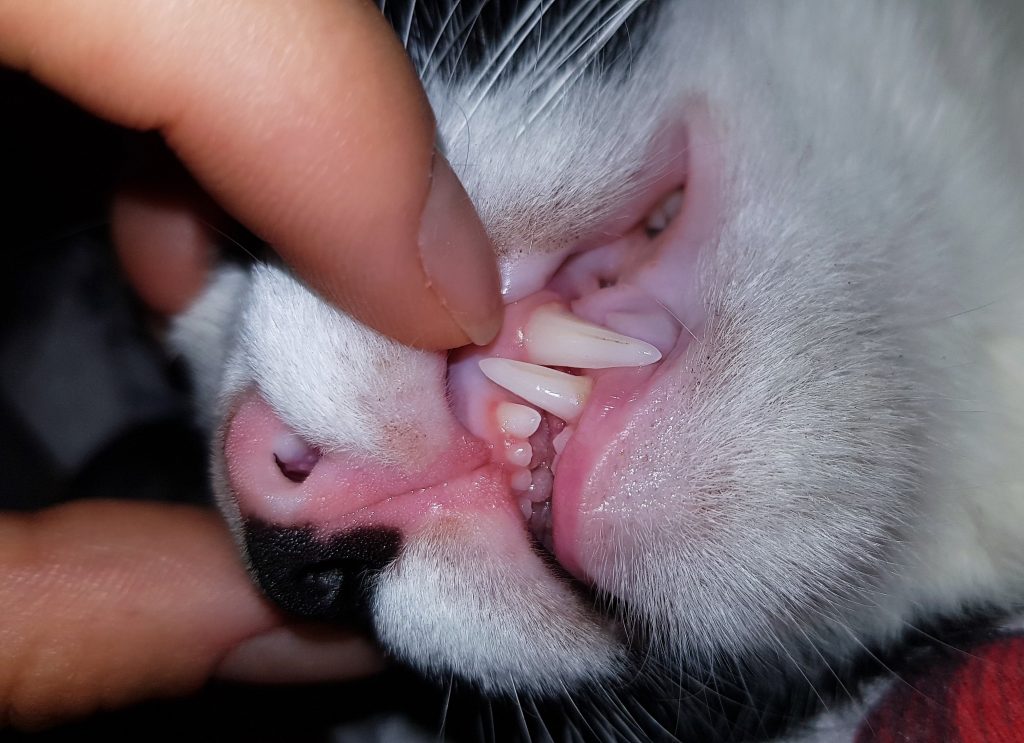
Around two years of age, your cat’s pearly whites will start to slightly get yellow. From 3 to 5 years old the yellow will increase and will start showing signs of wear (not being pointy as much) and build some tartar on the molars around the gum. From there until the age of 10 you will see the yellowing of the teeth very easily and increased signs of wear, tooth decay, and even broken off points of the teeth. After the age of 10, your cat’s teeth will probably be all yellow and your cat might even start losing some of its teeth.
How long does a kitten’s teething process last?
Your kitten’s teething process is quite fast. The baby teeth will start to come out when your kitten is around two weeks old and by the time it turns 6 weeks, all its 26 deciduous teeth will have grown. From 3 to 5 months old, the adult teeth will start to emerge through the gums and push the associated milk teeth until they fall out and replace them, completing the whole teething process of a kitten by 7 months of age at the latest. These are their permanent teeth, so make sure your cat has enough treats that help maintain good oral health, to preserve a good set of teeth.
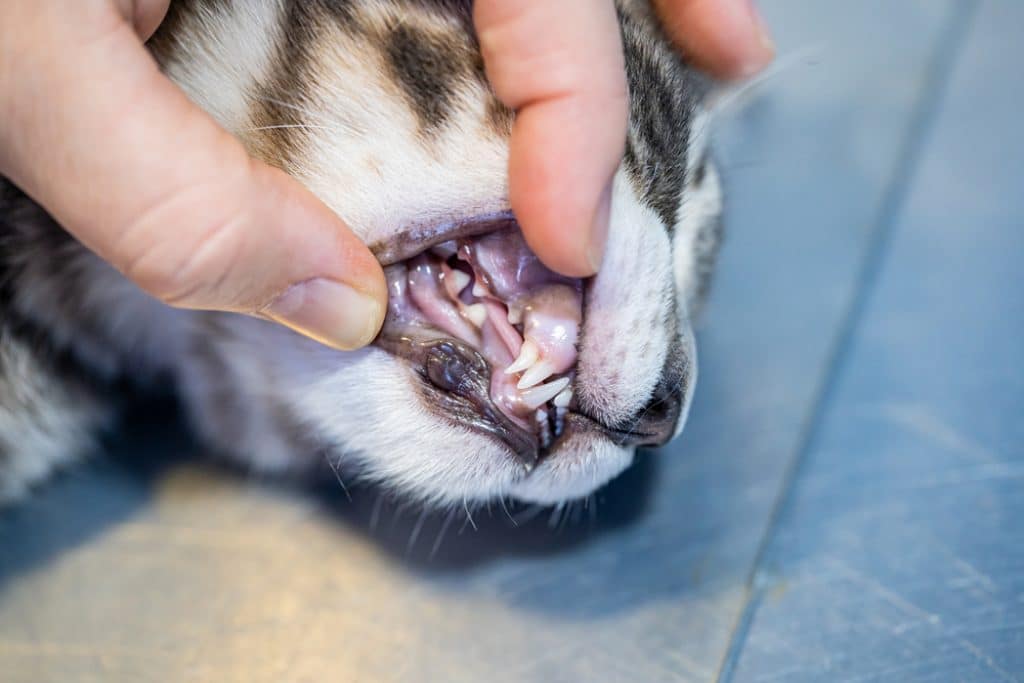
Signs your kitten is teething
When a kitten is teething it starts to chew more, it can drool, and gets easily irritable. Their mouth can have bad breath which is normal whilst teething, and your kitty might not want to eat as much as before losing its appetite. Having a sore mouth will render your kitten sensitive around the face. You can observe possible gum bleeding, pawing at the mouth trying to maybe pull out a dislodged tooth, and signs of less grooming due to oral discomfort.
What is the difference between a cat’s deciduous teeth and adult teeth?
The primary teeth are smaller and sharper than the adult teeth which are normally wider with flat ages. There are only 26 deciduous teeth that will fall out until a kitten is 6-7 months of age, whilst the adult teeth add 4 molars to their number, forming a 30 permanent teeth set a cat will have for all its life.
Did you know?
You can also estimate a kitten’s age by its weight. Look below in the weight chart to approximate your furbabies age. For example, at 3 weeks of age kittens should weigh between 10 ounces to 17.6 ounces (1.1 pounds).
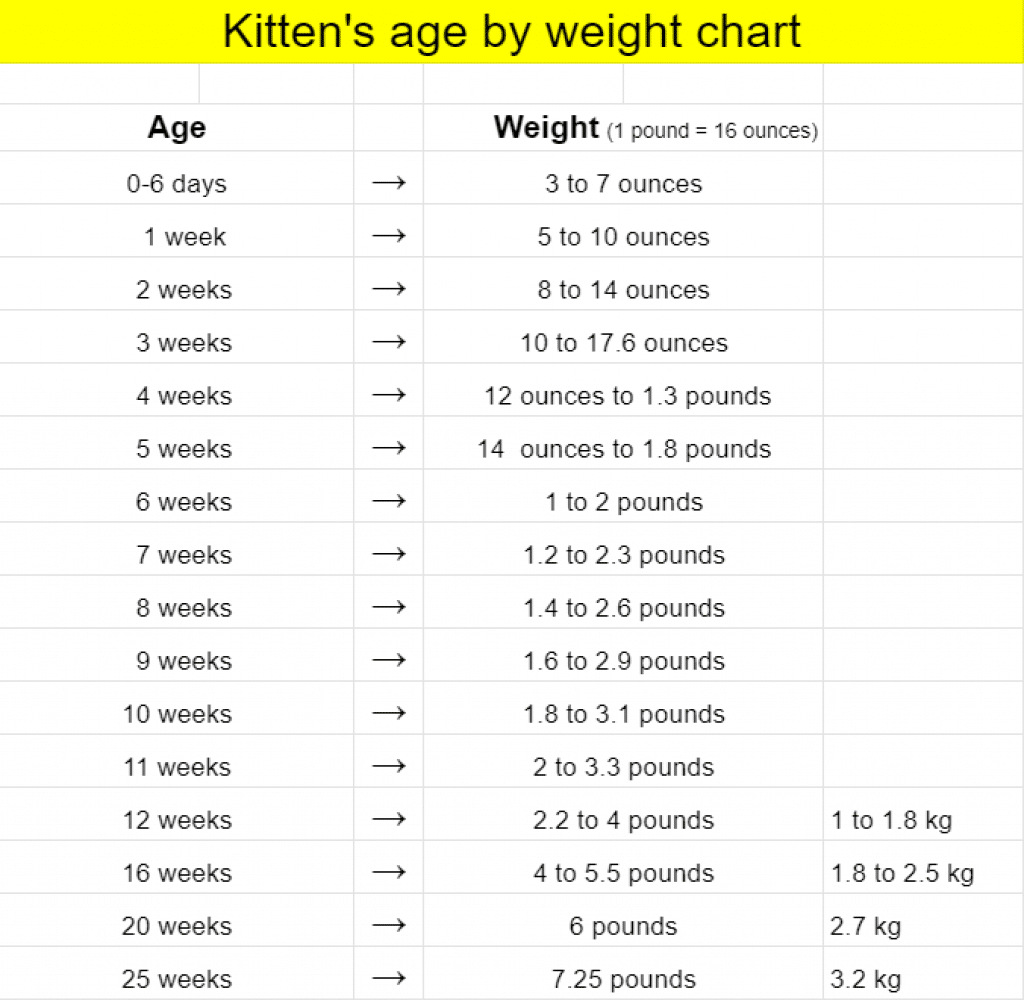
How to determine the age of toothless kittens
When a kitten is very small and its teeth haven’t even started growing yet, there are some development signs you can check to figure out its age. These helped me estimate Dot’s age when I found her in the garbage. She was around 2 weeks old at the time.
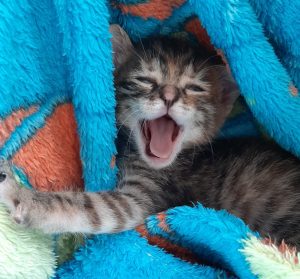
- 1 day old: Kittens are born blind and deaf. Their eyes are glued and the ears are folded
- 3 days old: The ears start to unfold
- 6 days old: The eyes and ears start to open, although they still can’t hear yet. Kittens will begin to crawl
- 10 -15 days old: The eyes will be fully open, always blue in color, but the pupils will not dilate yet.
- 14 days old: The kittens start to walk but will have no coordination, so they mostly wobble and fall
- 21 days old: Deciduous teeth emerge and the ear canals open, so the kittens begin responding to sounds
- 28-35 days old: The baby cats learn to groom themselves, play, and pounce
- 42 days old: Thir eyes start to change to their permanent color
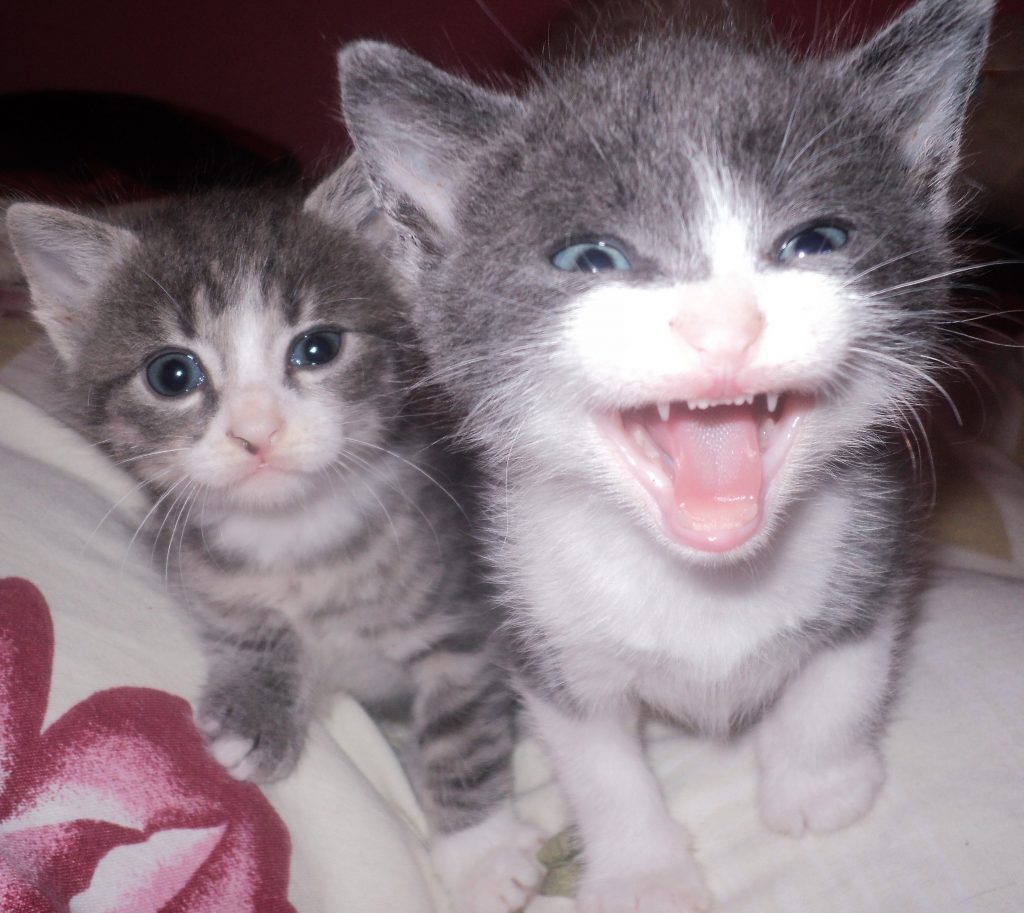
Have you ever been curious about how old a cat might be? Let me know in the comments below. I would love to hear your rescue stories.





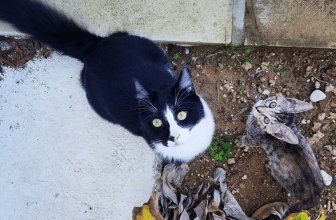

This really helped me figure out the age of the kitten I found today. Thank you.
Hi Beth,
I am glad our article helped you, so, how old is your kitten? ❤️
My kitten just went through the “double fang” stage last week (shown in one of the photos here)! It was kind of cute and disconcerting. Now the baby canines are gone and the BIG, new pointy fangs have descended further. It makes his mouth look totally different when he meows. Still cute though. He’s about 5 and a half months old.
Hi Heidi,
It looks like your kitten got his fangs out in time for Halloween!
I am glad you got to see this beautiful transition on your kitten.
To be honest, I kept a baby fang from my first cat when I found it in the house, I glued it on a page in a scrapbook as a memory.
Best regards,
Trixie